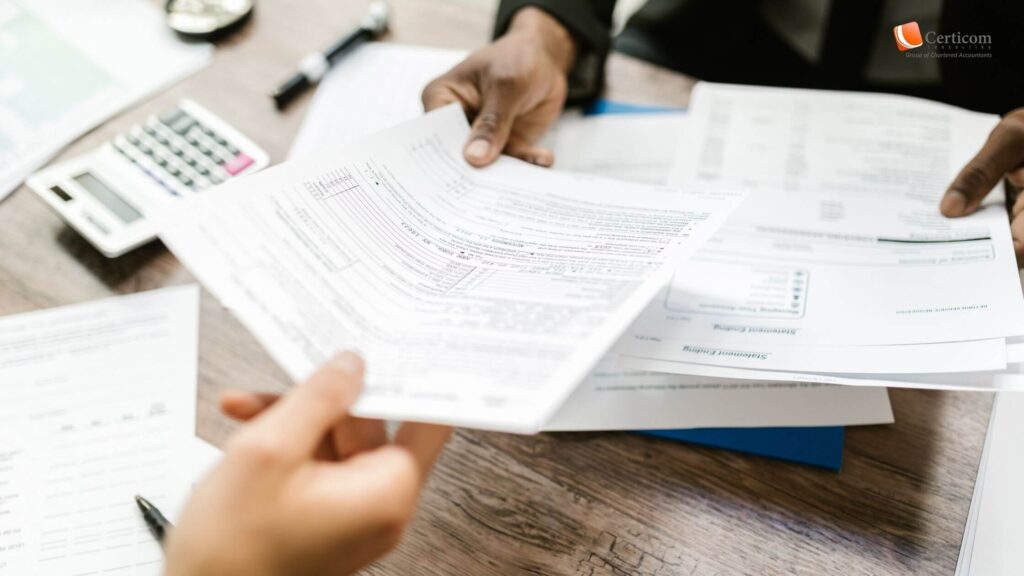Understanding Form 10F: Purpose, Scope, and Mandatory Conditions
Form 10F is a self-declaration tax form for non-resident (NR) taxpayers to claim DTAA benefits when their Tax Residency Certificate (TRC) is incomplete.

Earn income from India while living abroad? You might qualify for lower tax rates through a Double Taxation Avoidance Agreement (DTAA). Non-residents can benefit from DTAA, where income is taxed only once. India has these treaties with many countries, helping dual citizens avoid double taxation. But to claim these benefits, you need Form 10F.
Form 10F
Form 10F is a self-declaration tax form used by non-resident (NR) taxpayers to claim benefits under DTAA (Double Taxation Avoidance Agreement) when their Tax Residency Certificate (TRC) lacks essential details required for this purpose.
- NR taxpayers: Individuals or entities whose main income source is not from India.
- Double Taxation Avoidance Agreement (DTAA): Agreements between India and other countries to prevent double taxation on income earned in both jurisdictions.
- Tax Residency Certificate (TRC): A document issued by the NR taxpayer’s home country confirming their tax residency status, which is essential for claiming DTAA benefits.
Purpose of Form 10F
If the Tax Residency Certificate (TRC) lacks necessary information required by the Double Taxation Avoidance Agreement (DTAA), non-resident (NR) taxpayers must provide additional details using Form 10F.

To benefit from a tax treaty, NR taxpayers are required to submit both the TRC and Form 10F (if specific details are missing from the TRC) under Section 90(5) of the Income Tax Act. The TRC should include essential information such as the taxpayer’s name, foreign address, Tax Identification Number (TIN), and taxpayer status. If the TRC lacks these details, the taxpayer must electronically file Form 10F.
The requirement of Form 10F also enables Non-Resident Indians (NRIs) to claim tax exemptions and deductions on their income earned in India.
Requirements for Form 10F
To benefit from DTAA advantages, individuals must submit a self-declaration using Form 10F along with their Tax Residency Certificate (TRC) from their country of residence. Form 10F is mandatory for non-resident Indians (NRIs) who lack complete TRC details.
Submitting Form 10F enables NRIs to avoid Tax Deducted at Source (TDS) on their income earned in India, which is particularly beneficial since all their Indian income is subject to TDS. Furthermore, without a PAN (Permanent Account Number), TDS is deducted at a higher rate.
Previously, NRIs without a PAN had to file Form 10F online. This necessitated PAN registration for all taxpayers, as access to the income tax filing portal was unavailable without a PAN. However, for the fiscal year 2023, the Central Board of Direct Taxes (CBDT) granted one-time relief to taxpayers without a PAN. They were permitted to file the form manually by March 31, 2023.
Documents Needed for Submitting Form 10F
Below is a comprehensive list of documents required for filing Form 10F:
- Permanent Account Number (PAN) card
- Proof of residential address in your country of residence
- Period of residential status as mentioned in the Tax Residency Certificate (TRC)
- Taxpayer status (e.g., individual, company, firm, trust, etc.)
- Proof of nationality (for individuals) or territory of incorporation/registration (for companies and firms)
- Tax Identification Number (TIN) or any other unique tax identification number in your country of residence
- Digital signature certificate to validate the information provided in Form 10F
Consequences of Non-Compliance
- Failure to file Form 10F may result in the withdrawal of DTAA benefits.
- Non-compliance leads to higher TDS rates.
- Non-filing may categorise non-residents as ‘assessee in default’, complicating remittances.
Benefits of Filing Form 10F
- Lower Tax Deduction at Source (TDS): Avoid higher tax rates on income like dividends, interest, and royalties.
- Compliance with Indian Tax Regulations: Fulfills legal requirements to claim DTAA benefits.
- Faster Processing of Tax Returns: Ensures accurate tax assessment and avoids delays.

How to File Form 10F Online?
Step 1: Log in to the official e-filing portal with with your PAN or the user ID. Register if you do not have an account.
Step 2: On the dashboard, navigate to the ‘e-File’ menu and select ‘Income Tax Forms’.
Step 3: Click on ‘File Income Tax Forms’.
Step 4: On the next page, select the 3rd tab ‘Person not dependent on any source of income’.
Step 5: You will find the option to file Form 10F in the last column on this page. Click on ‘File Now’.
Step 6: Enter your PAN and select the assessment year from a dropdown menu. Click on ‘Continue’.
Step 7: Go through the given instructions and click on ‘Lets get started’.
Step 8: Enter the required details, including your name, father’s name, Section 90/90A, country of registration/residence, TIN, etc.
Step 9: Next, select the period for which you obtained the TRC and your address outside India.
Step 10: After filing the other details, you need to attach a copy of your tax residency certificate.
Step 11: Signing of the form can be done via digital signature or electronic verification code.
Step 12: Click on ‘Preview’ to review the details and submit the form.
Related Post
Cost Inflation Index for FY 2025-26: Impact on LTCG Tax
Loan Interest Deductions: How to Claim and Avoid Tax Scrutiny
Book A One To One Consultation Now For FREE
How can we help? *




